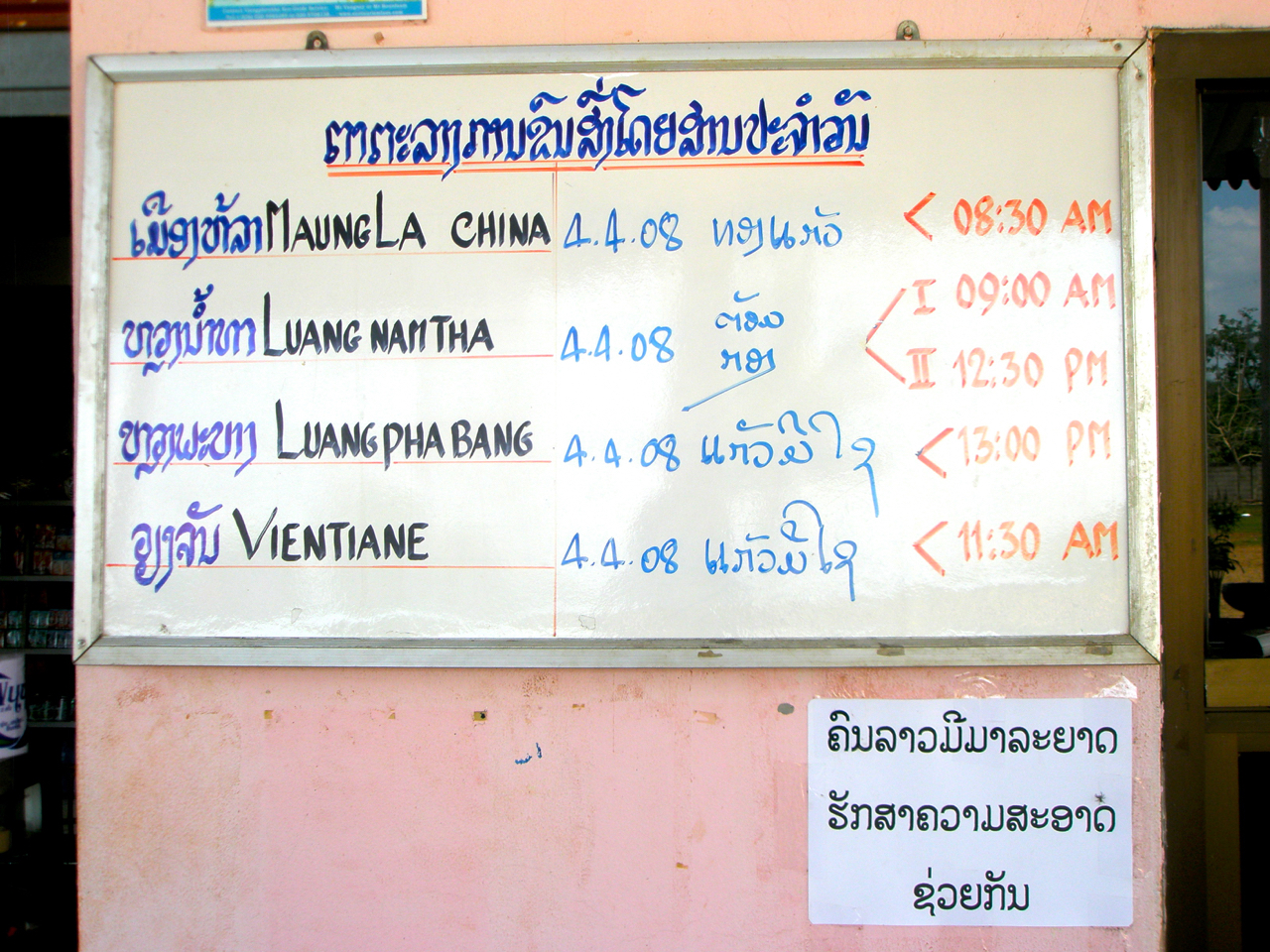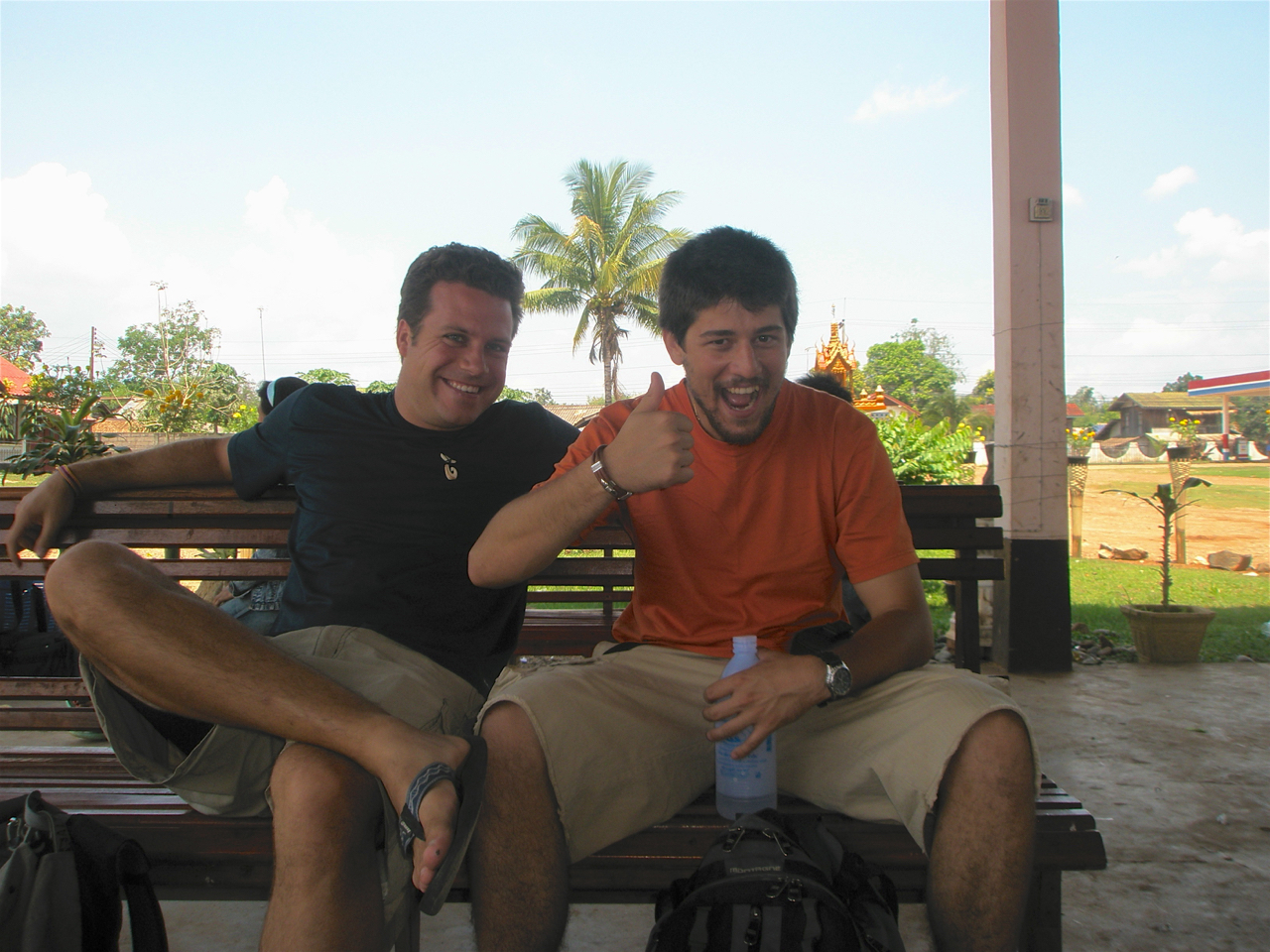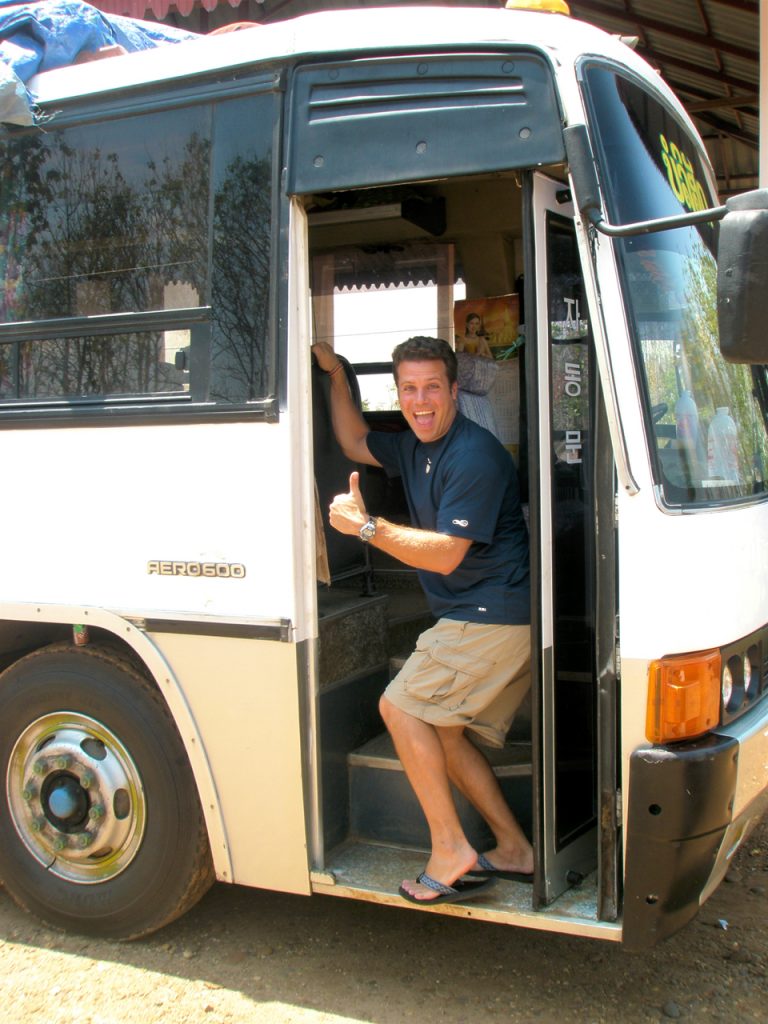The Long Road to Luang Prabang
Upon our arrival in northern Laos, we were presented with a variety of options as far as how to make our way to Luang Prabang- our next ‘stop’ on the SE Asia itinerary. We were in a small town called Huay Xai, where the ferry from Thailand had dropped us after crossing the Mekong River. We had heard from other travelers about these options, and had researched them as well, and even then, still hadn’t decided what method we were going to use. The three options were:
The Slow Boat: A typically over-crowded, open air barge-type boat that takes 2 days to get to Luang Prabang from Huay Xai, stopping at a local Laos village overnight along the way. We had heard that the ride seemingly took forever, that the boat was usually packed to the point of sinking, and that the overnight village stop was less an ‘authentic Laos experience’ and more of an opportunity for the locals to exploit the travelers that had no other options for food/accommodation, etc. The positives were that it was comparatively safe, you would meet fellow travelers on the ride, and it was basically a 2-day float trip down the Mekong.
The Fast Boat: A long, narrow, canoe-shaped boat powered by an outboard motor which can get you from Hauy Xai to Luang Prabang in around 6 hours. Obviously, the time difference is significant, but we had read repeated warnings about the danger of riding in the speedboats. Apparently, they are renowned for hitting submerged logs and other hazards while making the trip along the Mekong, resulting in serious injuries and even deaths. Combine that with having to endure the jarring of the boat along the river- backpacks and all other belongings in your lap- for 6+ hours, and it didn’t sound like fun…

Local bus schedule...
The overnight bus: A local ‘coach bus’ that would take about 12 hours to get from Hauy Xai to Luang Prabang. This was a safer option than the fast boat, and would get us to Luang Prabang faster than the slow boat would. The downside was the bus ride itself- we had heard stories of busses breaking down, stranding passengers for hours in the middle of nowhere. We also knew it was a ‘local’ bus as opposed to the ‘tourist’ busses we had ridden in Thailand, meaning that instead of a large coach bus designed for overnight passengers, it would most likely be an older bus, packed with more people than it had seats.
We were in a no-win situation, and after much deliberation, decided that the bus was the ‘best’ option. We bought our tickets, and headed for the bus station to get on board.

Still excited, waiting for the bus...
The first clue that we were in for it was the bus being late- 3 hours late. The second clue was when the locals started strapping their bags onto the top of the bus- no luggage rack, no cargo nets, no rain tarps to be seen- and then motioned for our backpacks to be passed up as well. Regardless of the clues, we had made our decision, and were sticking to it. We boarded the bus, and settled in for what we hoped would be an uneventful ride to Luang Prabang.

Let's GO!
Of course, it didn’t work out that way… Immediately, we were introduced to the mind-numbing SE Asian custom of incessant, not-stop horn-blasting by any and all motorists on the road. It was readily obvious that the horn on our bus was the best thing it had going for it- it was LOUD. Startlingly loud. Over the first few hours, Fede and I tried to decipher the rhyme and reason behind the practice, but finally concluded there wasn’t any. No one in sight anywhere on the road? Why not blast the horn six or seven times? Passing through a seemingly deserted stretch of the Laos countryside? How about 3 or 4 5-second blasts to break up the serene silence of the sun setting over the mountains? Cruising down the open road at 2am? Why not blare the horn a few times, just to make sure the passengers are awake and alert? Ridiculous…
To add to the headache-inducing horn blaring, the bus routinely stopped in every rural village to pick up more passengers, who proceeded to board the bus with huge bags stuffed full of homemade goods to be sold at markets in the larger towns and cities. They placed these bags anywhere they could find room- as the seats filled up, the aisle filled with these bags. As the aisle filled up with bags and more people boarded, the new passengers quarreled with each other for prime seats on top of the bags. Soon enough it was standing room only, with locals crammed 3 to a seat, some holding reed baskets with live chickens inside them on their laps. Fede got stuck next to a poor villager who sounded like he was literally coughing up a lung. I could hear him hacking away, and then spitting out whatever came up. The problem was, this unfortunate fellow was sitting on the aisle, so was spitting everything out on the floor. Awesome. This continued for hours- the chickens crowing, the bus horn blaring, the locals falling over each other as we rounded curves in the road, the sick man next to Federico hawking up his insides- good times!

Stuck on the side of the road in rural Laos...
We eventually came to a remote village in the countryside, and were instructed to get off the bus for a toilet break. Little did we know that this ‘short break’ would turn into a 3-hour debacle due to some disagreement between the local ‘police’, the bus driver, and some passengers who hadn’t paid the right fare. No one spoke any English, so Fede and I, along with 3 Australian backpackers who were on the bus, were left to simply wait until we were instructed to get back on the bus. The village offered no respite, as it was the middle of the night, there was no power, nothing open to buy food or water, and the toilet was the ditch on the other side of the road. I’m pretty sure this was about the time Fede and I began to formulate our Backpacker’s Mantra, two phrases that would see us through the toughest of times throughout the rest of our travels in SE Asia and beyond- ‘Always expect the worst’- that way, you won’t be let down, and ‘It’s all part of the experience’. That’s backpacking for you- the unforeseen and the unpredictable. Who knows how often we returned to those two sayings over the next 3 months, but the fact that we could think of them and somehow force a smile in what seemed to be the worst of situations is a testament to their worth…
Back to the village- eventually, we figured we weren’t going anywhere. We didn’t know if the bus had broken down, if this was a scheduled stop along the route, if we had run out of gas- no clue. All we knew was that we were stuck in a rural Laos village in the middle of the night, with no way to communicate with any of the locals around us. It was a pretty desperate situation, when all of a sudden, after over 3 hours, people started piling back on the bus. Having no idea what was going on, but not wanting to lose our seats or get left behind should the bus actually set off again, we climbed back on as well. Sure enough, the driver started the engine, and we were off, like nothing had happened. A few shrugs and a laugh shared between the 5 of us- by that time, we had all gone delirious from the lack of sleep, the honking, and the ridiculousness of the journey itself- and we settled back in, hoping that would be the last of the drama on the way to Luang Prabang.

We made it!!! Welcome to Luang Prabang...
Luckily, it was. I actually fell asleep for awhile, and was awakened by my seatmate gathering his bags together upon our arrival in Luang Prabang. We grabbed our backpacks, and clumsily filed down the aisle, off the bus and into the cool darkness of the pre-dawn morning air. The driver was tossing bags off the roof of the bus, and we had to watch for our to make sure they didn’t go crashing onto the ground. Once we had gotten everything sorted, we waded into what we learned was the customary ‘Welcoming Committee’ at every SE Asian stop- the tuk-tuk drivers waiting to take you to your guesthouse or hostel. They know you are going to be desperate for a bed after a ride like that, and that you won’t be in the mood to put up much of a fight in negotiating a fare for the ride. This morning, they were right. We hopped in a tuk-tuk, told the guy the name of our guesthouse, and paid him whatever he asked. Luckily, the guesthouse didn’t charge us for the first night, as we arrived around 4am. We signed in, got the key, stumbled across the courtyard to our room, dropped our bags, and collapsed onto our beds. The never-ending bus ride was over- we had made it to Luang Prabang.

Sunset over the Mekong in Luang Prabang....
To start planning YOUR adventure through Laos, click HERE......


